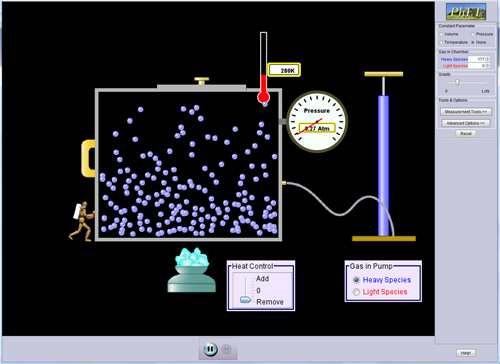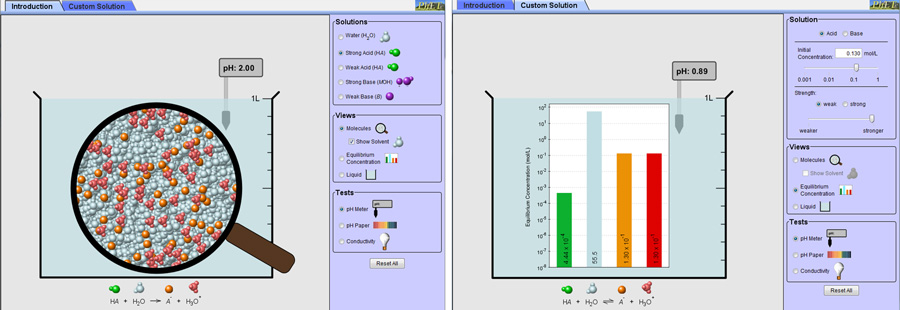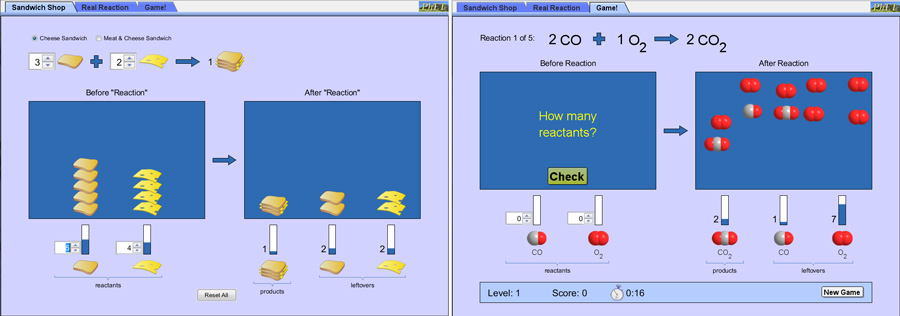
Figure 1: Gas Properties Sim
With a highly intuitive interface and minimal text, PhET sims are designed to give teachers control over how they are used in the classroom, enabling teachers to customize their use of sims to match their environment and learning goals. This flexibility allows PhET sims to be used in class, in lab or as homework, and with groups or individual students. While PhET sims can be used in a variety of ways, they are specifically designed to make scientist-like, inquiry-based activities productive and fun learning experiences for students (Introduction to the PhET Project).
Please visit PhET website at http://phet.colorado.edu/en/simulations/category/new

Figure 2: Acid-Base Solutions Sim
Physics
Motion, Sound & Waves, Work, Energy & Power, Heat & Thermo, Quantum Phenomena, Light & Radiation, and Electricity, Magnets & Circuits.
Biology
Balloons and Static Electricity, Blackbody Spectrum, Color Vision, Curve Fitting, Density, Eating & Exercise, Gene Machine: The Lac Operon, Membrane Channels, Molecular Motors, Natural Selection, Neuron, Optical Tweezers and Applications, pH Scale, Plinko Probability, Reactions & Rates, Salts & Solubility, Simplified MRI, Sound, and Stretching DNA.
Chemistry
Acid-Base Solutions, Alpha Decay. Atomic Interactions, Balancing Chemical Equations, Balloons & Buoyancy, Balloons and Static Electricity, Beta Decay, Blackbody Spectrum, Build a Molecule, Build an Atom, Density, Gas Properties, The Greenhouse Effect, Isotopes and Atomic Mass, Microwaves, Models of the Hydrogen Atom, Molecules and Light, Neon Lights & Other Discharge Lamps, Nuclear Fission, Photoelectric Effect, etc.
Earth Science
Molecules and Light, Gravity and Orbits, Glaciers, Balloons & Buoyancy, Gas Properties, Balloons and Static Electricity, Sound, The Greenhouse Effect, Wave on a String, Blackbody Spectrum, My Solar System, and Radioactive Dating Game.
Java and Flash should be installed on a computer to run the simulations.

Figure 3: Reactants, Products, and Leftovers Sim

No comments:
Post a Comment